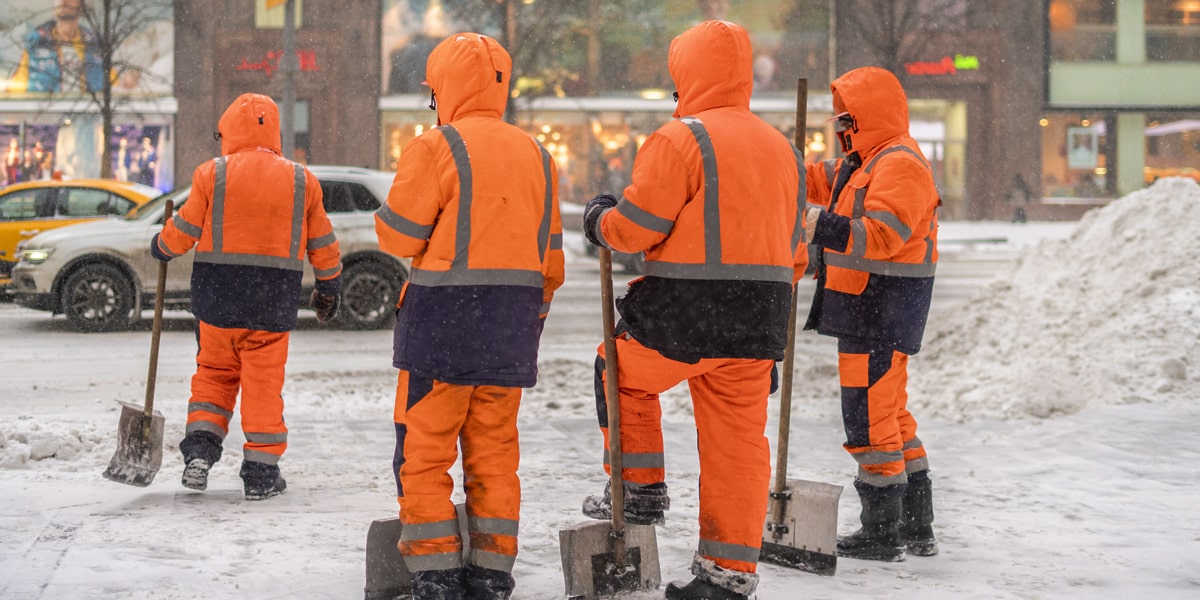If you’re waiting for ‘light jacket’ weather to arrive before setting up your snow operations, you’ll be too late. Top snow contractors are ready for the first snowflake long before the first frost. In this three-part series, we’re breaking down how the ‘snow pros’ set up their snow operations for success, regardless of what Old Man Winter throws their way. In Part 1, we provided some key budgeting guidelines for snow management. In Part 2, we’re going to dig into unbillable time.
Minimize unbillable time in your snow business
Unbillable time is any time spent on activities that don’t generate revenue but are necessary to run a business, e.g. estimating, invoicing and employee training. In snow & ice, you can add driving—both between sites and to and from salt depots, to the list. Unbillable time can’t be avoided but top snow pros know exactly what to do to minimize it.
Start with your Revenue Per Hour
If you have a budget (and you should!), you’ll know how much revenue you need to generate per hour to meet your sales goals.
Estimate Revenue Per Hour on a bid includes the total selling price of the job – including all labor, materials, equipment, subs, overhead and profit – divided by the number of hours estimated. It’s the total revenue your crews are producing per man hour.
Your Company Revenue Per Hour is something you set in your budget – it defines the revenue per man hour worked that you need to achieve in order to hit your sales goals. Your company revenue per hour is calculated by taking your budget’s total sales, and dividing it by the number of man hours in your field labor budget minus the % of unbillable hours that you have.
Your Estimate Revenue Per Hour is helpful for two reasons:
#1: It can tell you – at the estimate level, before you even take a job, whether that job is helping your company hit its sales goals (or holding you back).
#2: It’s an easy metric at the end of the job to measure to ensure your crew’s actual productivity is operating at a level that will ensure your company hits the goals you established with your COMPANY revenue per hour.
So, if your company had $1,464,000 in sales and 23,750 man hours in the field labor budget, with 10% unbillable factor, the math looks like this:
1,464,000 sales / 23750hrs X (1-10%)
1,464,000 / (23750 x .9)
1,464,000 / 21,375 = 68.49
Which equals $68.49. What that means is, the average revenue per hour on your jobs needs to be $68.49 per man hour in order to hit your sales budget.
You’ll want to sell to jobs that hit or exceed your revenue per hour and here’s how:
Trust Your Estimates
Once you’ve estimated a job, you should have the price (revenue) and the man hours estimated for the season (man hours). Simply divide price by man hours to ensure that job is helping you achieve your sales goals (at or above the target revenue per hour) or whether it’s a job that’s not very productive (below the target revenue per man hour).
Download our Unbillable Time Spreadsheet to get an idea of what it is costing you.
Optimize Your Contracts
There are two types of snow and ice contractors: those who take whatever jobs they can get and those who optimize their contracts. ‘Plow and pray’ is no way to run a profitable business so let’s take a look at how you can sell smart.
Scenario A: You have contracts with 10 banks in your area. It takes 15 minutes to drive between each bank. That’s a total of 2.5 hours of unbillable time in a 10-hour shift. Assuming your snow staff produce $120/hr in revenue per man hr, the table below illustrates the compound effect on lost revenue.
| # of Staff | Unbillable Hrs/Event | Lost Revenue/Event | Lost Revenue/Season (25 events) |
| 5 | 2.5 | $1,500 | $37,500 |
Scenario B: You’ve landed a contract with a large distribution center where the revenue equals that of the entire bank route. Selling services to the warehouse next door would be a lucrative move. With the money you’ll save on unbillable time and costs – you may even be able to use the same equipment if time permits – you’ll be able to easily outbid competitors and still turn a profit.
By concentrating your sales in the same areas, you’ll reduce drive time. And once those sales have been made, you can go even further and optimize your routes with LMN’s Job Groups. This snow removal software feature takes your list of jobs and automatically optimizes all of your snow routes for the season. All you have to do is provide a start and end point and the software does the rest.
Optimize Your MATERIALS and EQUIPMENT
Salt: Your crews are either lined up at the salt depot waiting for it or wasting time driving to get it. To eliminate long wait times (and lost revenue), stock salt at the yard or setup temporary winter yards closer to your sites.
The snow pros know that the ultimate way to reduce unbillable time is to have dedicated salt trucks. With trucks specifically for salt, there’s less wasted time and labor dedicated to salt. And that means more revenue generating opportunities for plow trucks.
Once your contracts are optimized, it’s important to plan your equipment needs. Would a tractor be faster than a plow for a group of jobs? An investment in new or leased/rented equipment will pay for itself if jobs can be completed more quickly and efficiently, leaving time to take on additional work.
Optimize Your Tech
It’s no secret that technology can transform your business. By leveraging snow removal business software to automate key functions—from snow removal estimating, customer relationship management and snow crew monitoring to invoicing, you’re freeing up time for business building.
What if you could…
- save 25 hours a week on payroll alone?
- generate and send estimates right from the cab of your truck?
- know your crews’ locations in real-time using a snow removal tracking app?
Though replacing old systems and processes with snow plowing software can seem overwhelming in the beginning, you simply can’t build a sustainable, competitive business without it.
When you focus on minimizing unbillable time, you’ll notice your business is able to handle more capacity with less overhead. For example, when contracts, equipment and technology are optimized, one admin person is able to handle double (or triple!) the snow business. And that’s just one employee. Now imagine the impact on your entire snow operations.
Want to ‘own’ Winter this year? Register for the LMN Academy Snow Day on Friday, November 1st from 9am – 4:30pm EST in Toronto. This advanced course is designed for existing LMN users who want success in snow.
Did you miss Part 1 of 3? Find out why budgeting is key for success in snow & ice.



